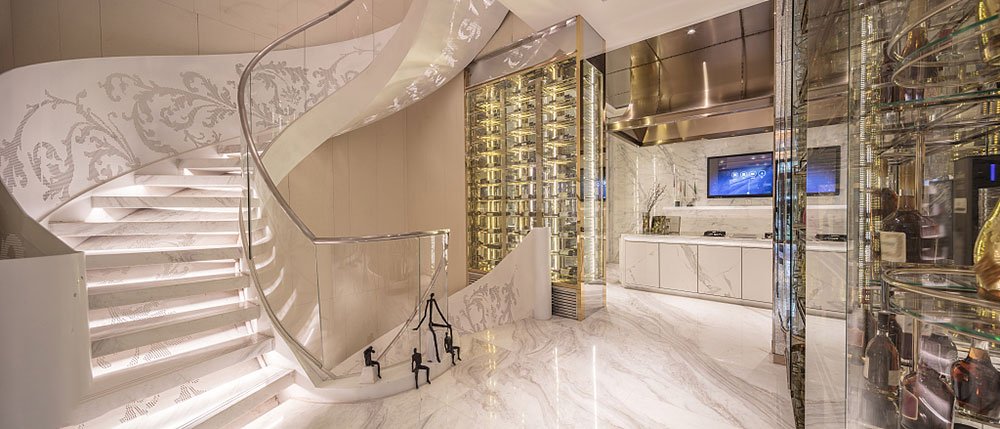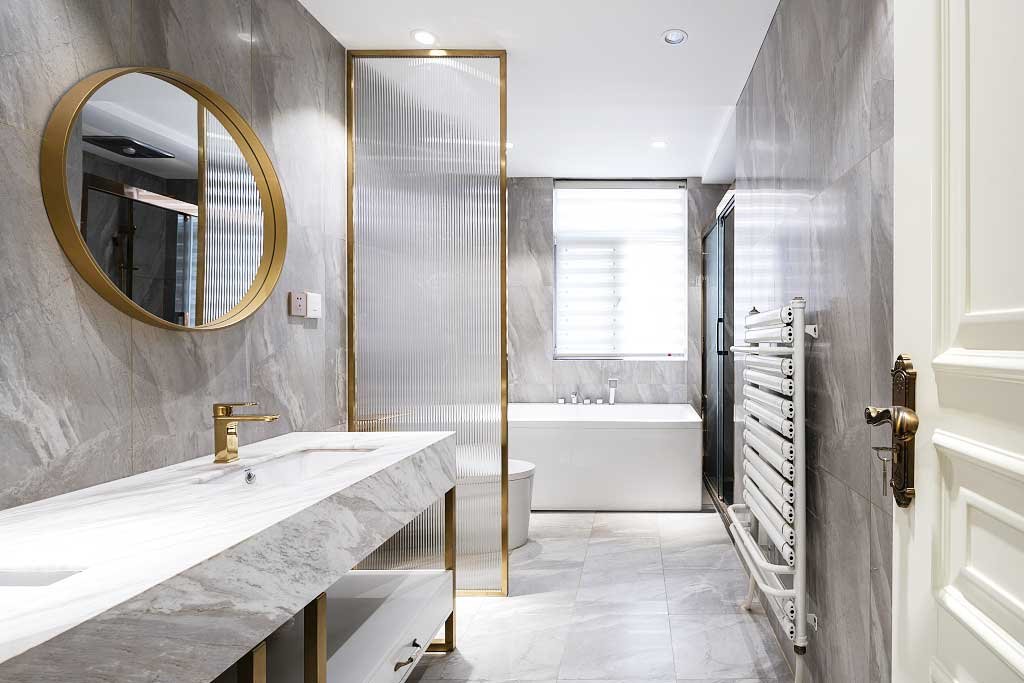The Art and Practical Beauty of Hand Hammered Metal Panels
Table of Contents
Under the background that modern architecture and interior design are increasingly pursuing individuality, artistic feeling and texture, metal materials are returning to the mainstream with a new attitude. In particular, those with traces of traditional crafts of hand-made metal finishes, has become a number of high-end projects and designer works in the highlights. Among them, manual hammered metal plate is favored by more and more designers and architects because of its unique texture, non-mechanized visual language and tactile effect.
Hand hammering is a traditional technique derived from ancient metalworking. In the early period, it was mostly used for the decoration of bronze ware, bronze pots, swords and so on. It continuously struck the metal surface by hammer and punch, so that it showed a rhythmic and textured texture effect. Today, this ancient process is applied to modern metal plates such as stainless steel, copper, and aluminum, which not only gives visual layers to the space, but also makes industrial materials exude a warm and elegant humanity.
With the rise of high-end customization, material aesthetics and sustainability, hand–hammered metal sheet is not only a material choice, but also an expression of life attitude and aesthetic concept.
What is Hand Hammered Metal Sheet ?
Process Description
Manual hammered metal plate is formed on the surface of the metal plate by means of manual beating to form continuous and rhythmic concave and convex textures. This process emphasizes the“Hand” traces, each hammer, each hit are slightly different, making the final texture natural, organic, can not be copied. The hammering methods mainly include point hammering, scale pattern, wave pattern, spiral pattern, etc. . The texture presented by different tools and percussion rhythm is also completely different.
Behind these panels is not only the skill of the craftsman, but also the spiritual and emotional input brought by repeated hammering. For this reason, handmade hammered panels are often regarded as “works of art in industry”.
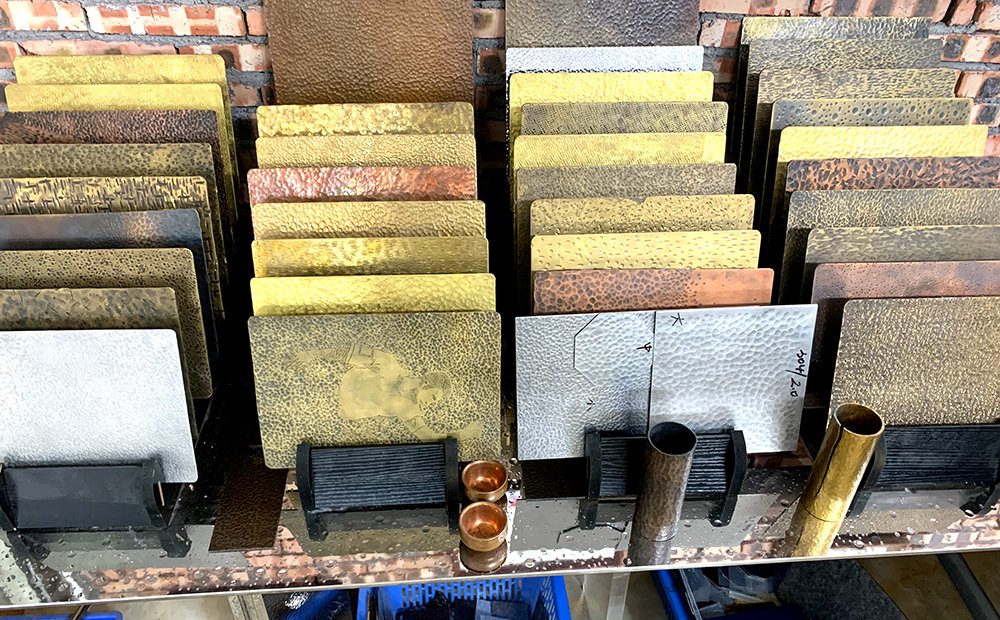
Differences From Mechanical Embossing
Modern industrial technology can mass-produce all kinds of embossed and embossed metal plates, but compared with manual hammering, mechanical embossing is too regular and stiff, and lacks natural rhythm and artistic sense. Hand Hammer print emphasizes the uniqueness of each piece, its random and orderly texture to form a moist light effect, especially attractive in the light.
In addition, hand hammer in the details of a more“Three-dimensional”, texture depth natural transition, not as uniform as mechanical embossing flat. This makes it in the high-end interior design and decorative arts with irreplaceable value.
Contrast Dimensions
Manual Hammering
Mechanical Embossing
Texture Consistency
Each piece slightly different, full of handcrafted texture
Batch uniform, strong sense of machinery
Visual Expression
Light and shadow flow, more details
The pattern is repetitive and flat
High Artistic Value
High, suitable for customizing high-end space
Relatively low, suitable for mass decoration
Cost
Higher
Lower
Sustainability
It is usually made to order and is more environmentally friendly
Mass production, high material utilization
Integration of Artistry and Functionality
Hand hammer pattern is not only beautiful, its slightly convex surface structure has also brought the improvement of practicality. First of all, this texture can effectively reduce light pollution, especially in high-brightness metal (such as mirror stainless steel) applications, hammer texture can soften the reflection, make the space more soft and pleasant. Secondly, the hammer structure can improve the structural strength and compressive properties of the metal plate to a certain extent, and reduce the obvious degree of surface scratches and fingerprints.
This makes the hand hammer plate widely used in indoor and outdoor decoration, furniture panel, elevator car, commercial display, art installation and other fields, taking into account the artistry and functionality.
Comparison of Common Materials of Hammered Metal Plate
Manual hammering process can be applied to a variety of metal materials. The physical properties, color performance and oxidation reaction of different metals determine their differences in hammering effect, they also affect the way they are used and maintained. The following will start from stainless steel, copper, aluminum three main materials, a detailed comparison of its characteristics after the treatment of hand hammer.
Hammer Plate in Stainless Steel
Stainless steel is a kind of modern metal material with strong corrosion resistance, high strength and easy cleaning. Combining it with manual hammering process can give it a softer aesthetic temperament and weaken its industrial sense.
- Strengths
- Strong corrosion resistance: especially 304 and 316 stainless steel, suitable for wet or outdoor environment.
- Color diversification: through the PVD surface treatment process, you can achieve gold, Black Titanium, rose gold, bronze and other colors of hammer effect.
- Simple Maintenance: the surface anti-fingerprint ability is good, low cleaning costs.
- Application Scenarios
- High-end hotel lobby, elevator car, shopping mall column package board
- Interior decorative wall, cabinet panel, art partition
Points to Note
- Hand hammer after the surface hardening, if you need to bend processing, should be first forming and then beating.
- Mirror stainless steel hammer more light and shadow flow, but easy to show fingerprints, need to be equipped with anti-fingerprint coating.
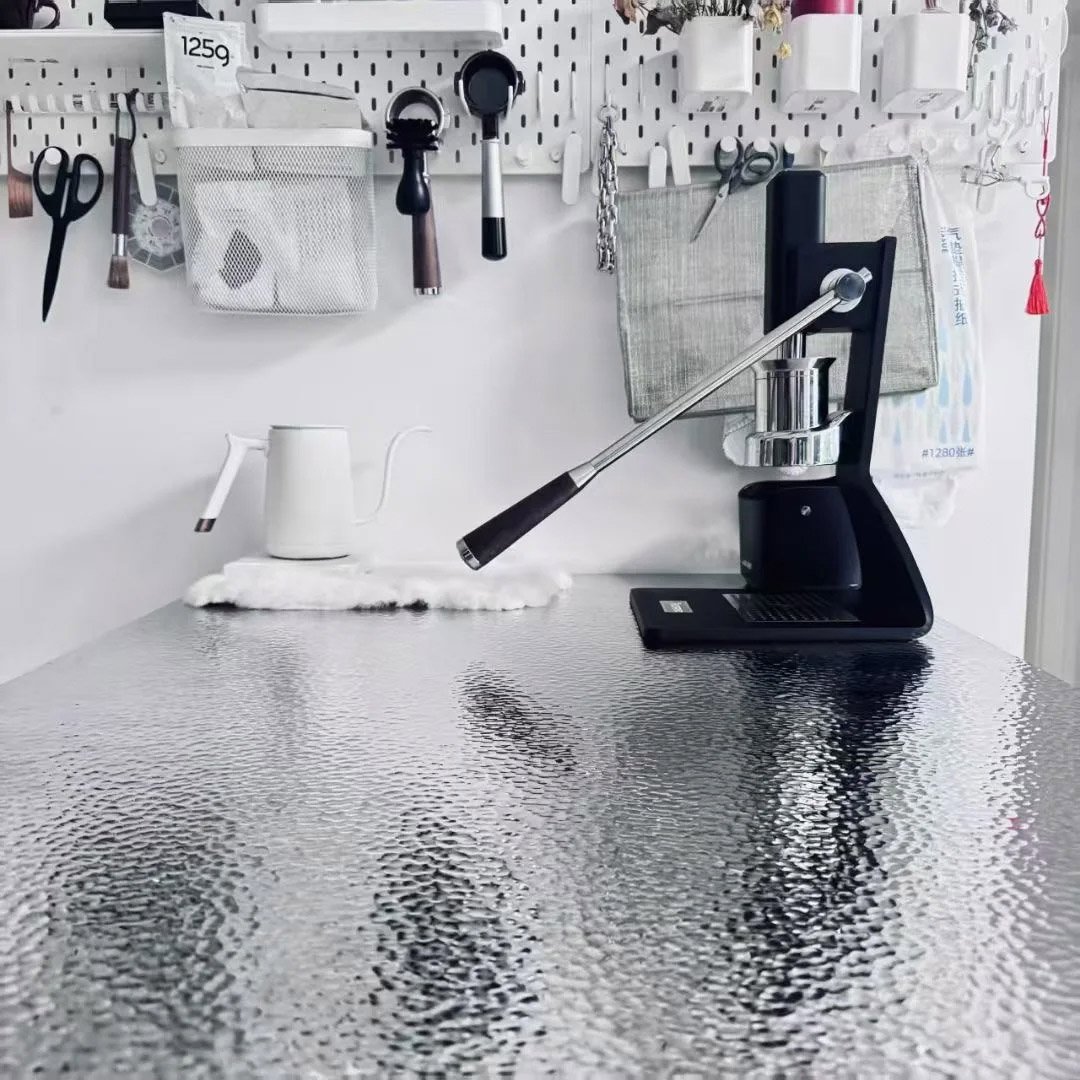
Copper Hammer Plate
Copper is a metal with a warm color and a strong sense of history. Its softness makes it one of the earliest and most classic materials in hammering technology.
- Strengths
- Texture moist, strong sense of history: copper itself has elegant reddish brown or brass color, hammered after the light and shadow more warm.
- Natural aeruginous or bronze color after oxidation: popular for antique style and art installation.
- Plasticity: hammer texture performance is more delicate and rich.
- Application Scenarios
- Museums, art centers, high-end restaurants
- An antique finish, signboard, mantle
Points to Note
- Copper is easy to oxidize, so it should be decided whether to do anti-oxidation treatment according to the use scenario.
- High cost, often used for local decoration or small area embellishment.
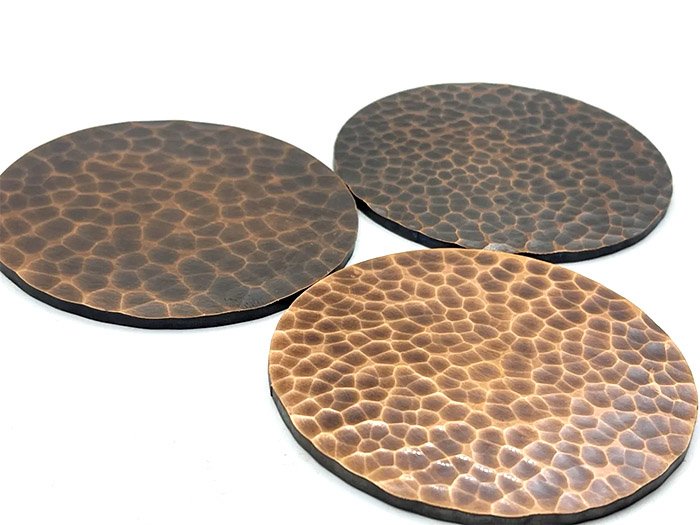
Aluminium Hammer Plate
Aluminum is a kind of metal material with light weight, strong thermal conductivity and relatively friendly price. Through anodic oxidation, spraying and other ways, aluminum hammer plate can also show a variety of styles.
- Strengths
- Light weight, suitable for large area decoration: especially suitable for ceiling, wall, etc. on the structure of the load requirements of the space.
- Rich colors: metal gray, champagne gold, bronze and other colors can be presented by spray coating or oxidation treatment.
- Cost-effective: compared to stainless steel and copper, suitable for budget-sensitive projects.
- Application Scenarios
- Commercial space wall and ceiling, large exhibition hall, office building interior decoration
- Home customization such as wardrobe doors, headboard, background wall
Points to Note
- Aluminum is relatively soft, surface scratch resistance is not as good as stainless steel.
- In outdoor use, it is recommended to use fluorocarbon spraying and other methods to enhance weather resistance.
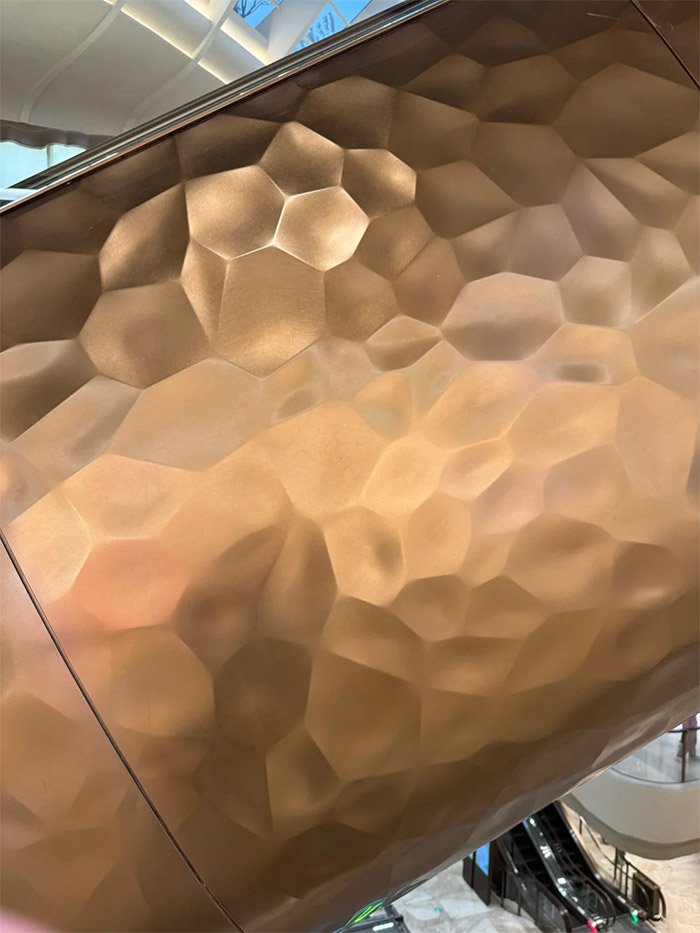
Summary of Material Contrast
Material
Appearance Characteristics
Strength & Durability
Cost
Oxidation Reaction
Recommended Use
Stainless Steel
Modern, high gloss strong
High
Upper-middle
High, suitable for customizing high-end space
Commercial, architectural, interior decoration
Copper
Warm and moist, with a sense of history
Middle
High
Easy to oxidize, showing a patina
Art installation, antique style space
Aluminum
Light and colorful
Medium-low
Middle
Slightly oxidizable
Large area of wall, ceiling
The Application of Manual Hammered Metal Panel in Modern Design
With the continuous improvement of people’s pursuit of material aesthetics and personalized design, the use of hand hammered metal plates in various spaces is also becoming more and more extensive. From interior decoration to architectural cladding, from furniture design to art installation, this unique metal finish not only provides visual impact, but also gives spatial hierarchy and texture in touch and light and shadow changes. Below we will discuss hammered metal sheet application scenarios in detail from several major areas.
The Application of Interior Space
In the modern home and commercial space, hand hammer metal plate is widely used in the wall, ceiling, bar, background wall and other positions, become the designer’s hands “Texture brush”.
- Wall and background wall
- The reflection of the hammer plate under illumination has a dynamic effect, which can enhance the visual tension of the space.
- Stainless steel hammered wall often used in the kitchen or dining room background, both beautiful and anti-fouling performance.
- Copper Hammer background wall is more suitable for creating a warm, retro atmosphere, suitable for living rooms, clubs and other spaces.
Ceiling and suspended ceiling
- Through the point-like or linear arrangement of the hammer metal ceiling, can enhance the space layer high feeling.
- In public spaces such as hotel lobbies and museums, hammered ceilings can be used as visual focal points to enhance the overall design tonality.
Functional partitions and screens
- Partitions made from hammered metal panels are lightweight and easy to clean, and can add artistic ambiance while maintaining a sense of airiness in the space.
- Common in high-end office areas, boutiques and restaurants private rooms.
Furniture & Accessories Design
Hammer metal plate is being more and more into the furniture design, they break the traditional flat metal surface cold hard feeling, so that furniture presents a unique hand texture.
Furniture panels and table tops
- Copper Hammer table is often used in custom tea table, edge a few, highlight the grade.
- Aluminum hammered panels are lightweight and are ideal for removable furniture such as side cabinets and drawer panels.
Doors and drawers
- The use of hammered metal on cabinet, wine cooler and closet doors is becoming increasingly popular, both to enhance the visual effect and to resist wear and stains.
Lighting and decorative pieces
- Hammer metal plate of small area is suitable for making droplight, wall lamp lampshade, its light and shadow penetration effect is amazing.
- With glass or wood, can show the contrast between materials beauty.
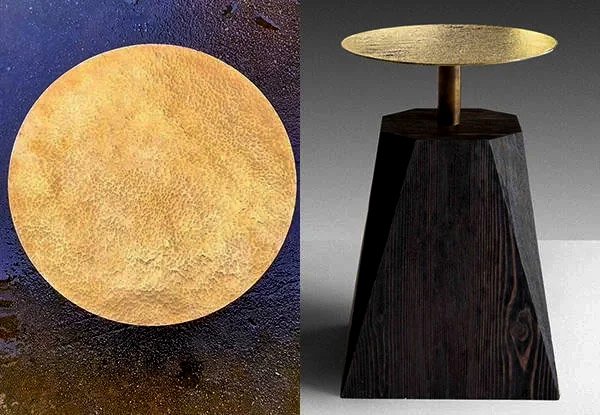
Building Facade & Exterior Eall Decoration
In the field of architectural design, hammered metal plate has gradually become the new favorite of facade decoration because of its weather resistance and plasticity, especially for high-end commercial buildings or cultural venues.
- Stainless steel hammer plate has excellent corrosion resistance, suitable for exterior wall surface, resist wind and rain erosion.
The exterior wall with copper hammer pattern can be naturally oxidized with the passage of time, resulting in simple aeruginous and forming a unique aesthetic sense of time.
Aluminum Hammer Plate is light weight, suitable for large area laying, often used for building curtain wall or public facilities facade.
Art & Installation Design
Artists and installation designers are also increasingly using hand hammered metal plates as a medium, and their unique texture adds handcrafted temperature and material tension to their work.
Hand hammered surfaces can be combined with carving, oxidation, spraying and other processes to create works of art with a story.
In art galleries, public squares and exhibition spaces, hammered metal is often used as a part of sculpture and installation art to show the dialogue between material and space.
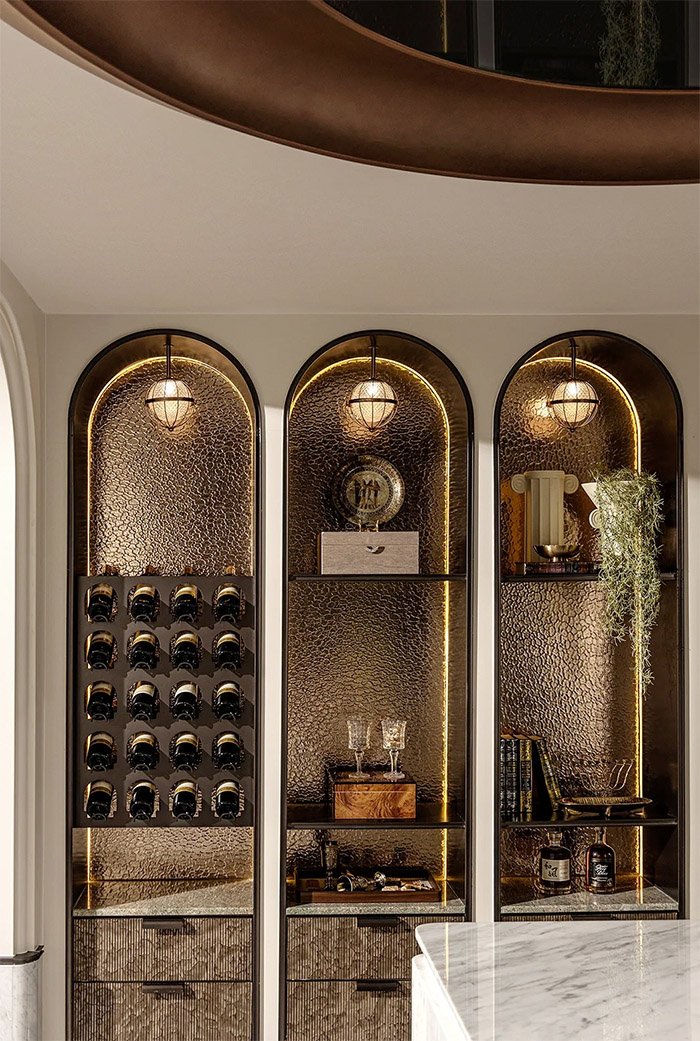
Daily Maintenance & Maintenance Suggestion
As a kind of decorative material with both artistry and practicability, manual hammered metal plate has certain corrosion resistance, oxidation resistance and scratch resistance, but in order to extend its service life, maintain its surface texture and luster, still need regular reasonable maintenance and repair. The following offer practical advice on a number of fronts:
Basic Daily Cleaning
- Use soft cloth cleaning: it is recommended to use clean soft cloth or microfiber cloth gently wipe the surface, avoid the use of rough towels or cleaning cloth, so as not to scratch the metal surface.
- Avoid the use of strong acidic or alkaline cleaners: should choose neutral cleaning solution to dilute the use, especially for copper and aluminum material hammer plate, acidic solution easily cause oxidation or discoloration.
- Regular dust removal: if used in public space or outdoor environment, can regularly use vacuum cleaner or dry cloth to remove metal surface dust, prevent dust spots or affect the metal luster.
Treatment of Specific Pollutants
Stainless steel hammer plate
- Fingerprint or grease stain can use the detergent that contains alcoholic composition to wipe, reoccupy clean soft cloth is wiped dry.
- Water spots: available diluted vinegar gently scrub, and then rinse with water.
Plate with copper hammer pattern
- Oxidation spots: use special copper products cleaning agent or natural lemon juice and salt mixture gently rub, help to remove the slight oxidation layer.
- Keep dry: copper is more likely to react with moisture and sulfide in the air, it is recommended to keep the environment dry and ventilated.
Aluminium Hammer Plate
- Oxide film protection: most of the aluminum plate has surface anodic oxidation treatment, not frequent use of deoxidizer, otherwise it may damage the protective film.
- Scratch treatment: minor scratches can be used aluminum special polishing paste repair, but deeper scratches need to re-process the surface as a whole.
Surface Protection Recommendations
- Waxing curing: for Hammer Plate without film covering or anti-fingerprint treatment on metal surface, regular coating of special protective wax for metal can be considered to enhance the ability of anti-oxidation and anti-fouling.
- Film Protection (optional) : if used in crowded or industrial environment, can use transparent protective film to reduce external friction caused by surface wear.
Avoid long-term contact with organic solvents: such as paint, glue, acetone, etc. , should be avoided for a long time attached to the metal surface, so as to avoid corrosion reaction or leaving traces difficult to remove.
Matters Needing Attention in Installation and Later Use
Avoid sharp metal tools direct contact with the surface: the installation process should be used with wrapped protection of construction tools, to prevent the hammer surface left scratches.
Attention to environmental humidity and ventilation conditions: especially copper, if long-term high humidity environment, easy to form uneven oxidation plaque.
Avoid direct contact with heat source: although stainless steel is resistant to high temperature, prolonged contact with high temperature heat source (such as oven, open flame) may still affect the surface color and even deformation.
Recommended Maintenance Cycle
Through the daily maintenance of the system, it can not only effectively extend the service life of the hammered metal plate, but also maintain its unique surface artistic effect and ensure the overall quality of the decorative space.
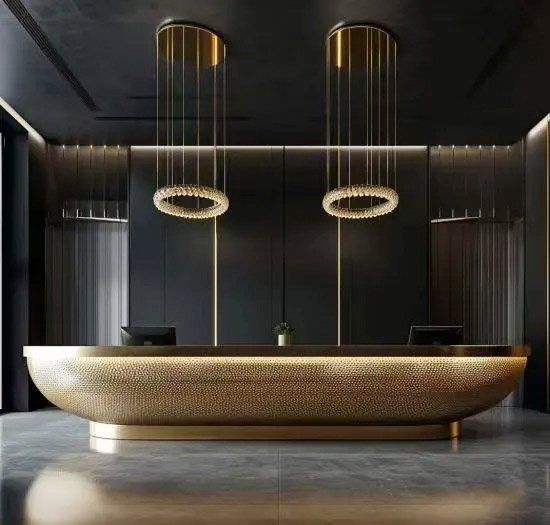
FAQs
Material
Cleaning Frequency
Deep Maintenance Recommendations
Stainless Steel Hammered Plate
Cleaned 1-2 times per month
Deep polished semi-annually
Copper Hammered Plate
Cleaned 1 time per month
Quarterly inspection and replenishment of protective wax
Aluminum Hammered Plate
Cleaned 1 time per month
Semi-annual inspection of anodic layer integrity
Are hand hammered metal sheets prone to fading or discoloration?
It depends on the material and finish of the metal:
Stainless steel material itself has strong corrosion resistance, if the PVD vacuum plating or anti-fingerprint processing, excellent color durability, not easy to fade.
Copper is easily oxidized and discolored, but this is usually regarded as its natural aesthetic expression. If you do not want the surface of natural oxidation, can add a transparent protective layer or regular wax curing.
The color stability of aluminum plate is also good after anodizing treatment, but it may fade or have color difference if it is exposed to strong acid and alkali for a long time.
Can hand hammered textures be customized?
Yes. One of the advantages of hand hammering is that it is extremely customizable. According to the design style, customers can choose the following elements to customize:
Texture density: can be coarse and fine.
Beating direction: random, regular, radial, wavy, etc.
Beating strength: determine the depth of concave and convex.
The color stability of aluminum plate is also good after anodizing treatment, but it may fade or have color difference if it is exposed to strong acid and alkali for a long time.
Does the hand hammering process affect the flatness of the plate?
Hammering will change the original flatness of the metal plate in essence, and the surface presents a concave and convex texture, which is the characteristics of hammering process and the embodiment of decoration aesthetics. However, this”Non-flat” is controlled by the design, after the leveling or back support structure, can fully meet the application standards of decorative panels.
In the use of very high requirements for flatness scenarios (such as precision surface or specular reflection area) , it is recommended to evaluate the design intent in advance, select a shallow texture or regular hammer texture style, and strengthen the structure.
Why is the price of manual hammered plate higher than ordinary metal plate?
The four main reasons are as follows:
- High labor costs: Manual hammering requires experienced craftsmen to complete the hammering piece by piece. It requires long labor hours and high technical proficiency, which is much higher than mechanical embossing or common metal processing.
Unique artistic value: Each hammer plate patterns are slightly different, with a sense of art can not be copied texture, belongs to the”Semi-manual works of art”, higher than the value of industrial products.
High requirement for material loss control: Because the percussion process may cause deformation, cracks or scrap, so the material selection and control standards are more stringent, yield is less than conventional products.
The follow-up is complicated: Some manual hammer plate still need to cooperate with mirror, titanium, PVD, sealing glaze and other surface treatment, increase the overall process cost.
You Might Also Like
Please Share This
Recent Posts
- Installation Considerations for Metal Decoration
- Decorative Stainless Steel Solutions for Hospitality Projects
- Stainless Steel Decorative Trim Installation Guide: Ensuring Precision, Durability, and Aesthetic Quality
- Quality Control Key Points in Large-Scale Metal Engineering Projects
- Installation Challenges and Solutions for Stainless Steel Hotel Decorations

